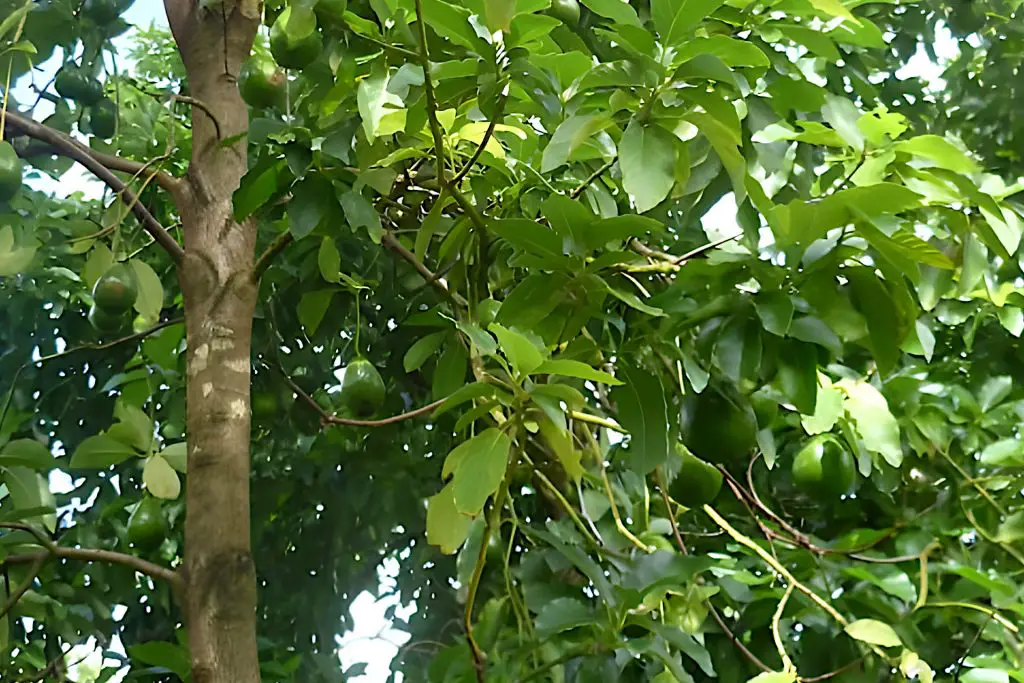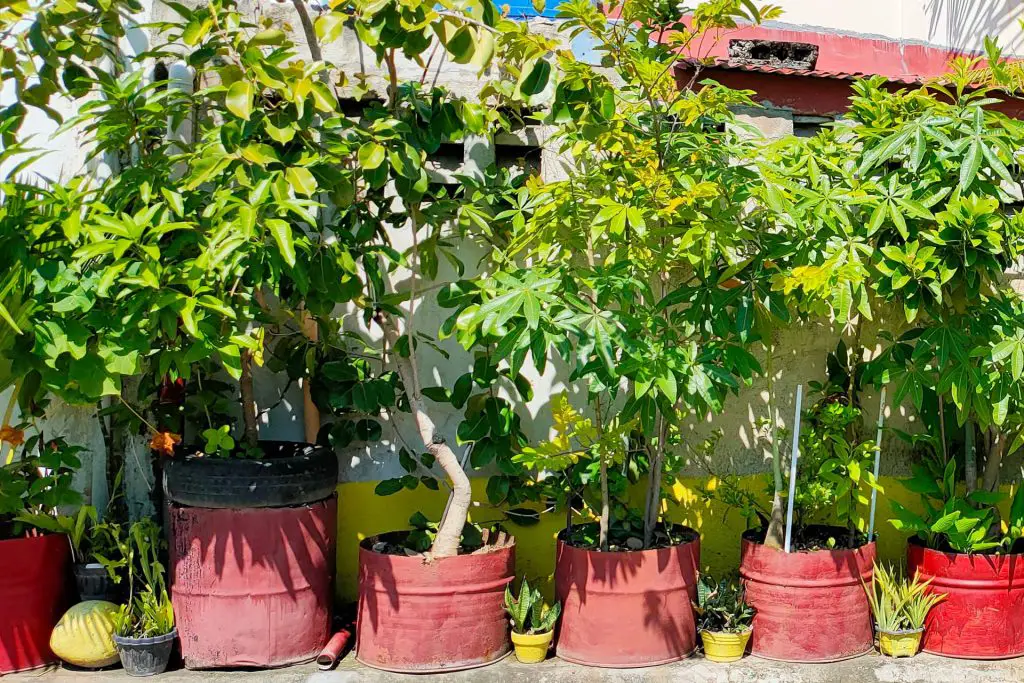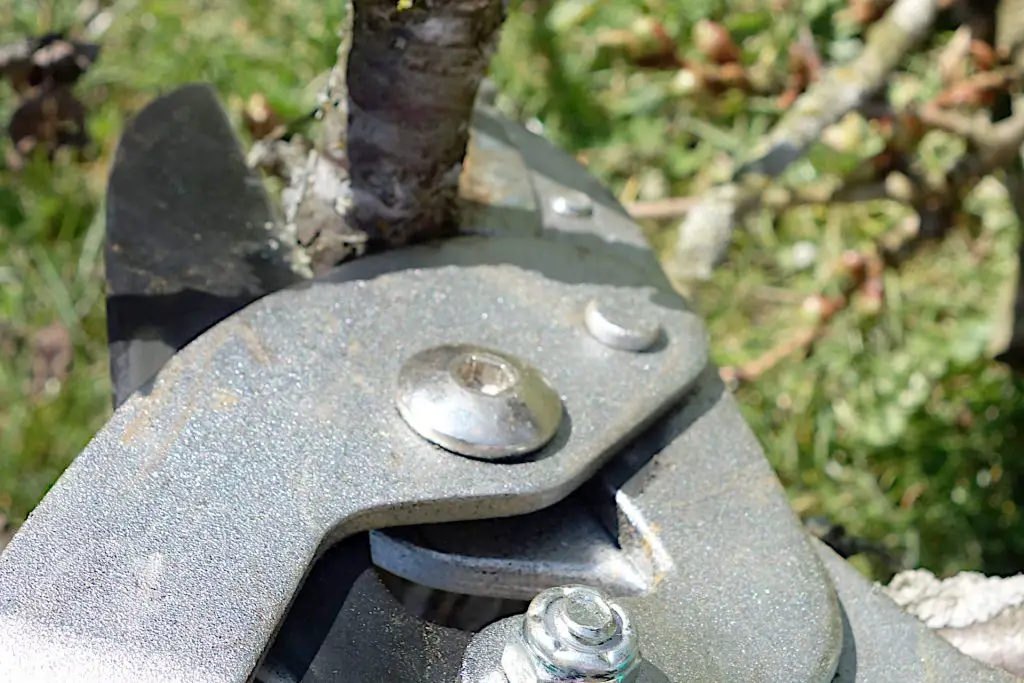Pruning an Avocado Tree: Managing the Growth and Shape of Your Avocado Tree
Pruning an avocado tree is an important part of tree care. It can help improve the tree’s health, encourage fruit production, and control the tree’s growth. It is particularly important if you have an outdoor avocado tree in limited space or are growing your tree indoors.
There are of course many reasons why you should prune your tree, from wanting your tree to conform to a specific size and shape, to ensuring your tree optimizes fruit yields. However, with certain requirements such as size, you need to have a pruning plan set from when the tree is at a young age to achieve the desired effect.
In addition, what, how, and when you prune will all have a considerable impact on the result with in some circumstances, the danger of over-pruning also being prevalent.
Why Prune an Avocado Tree

There are a number of reasons why you might prune an avocado tree. Much will depend on your objectives for the tree, its location (indoors or outdoors), and its health (if the tree is diseased).
Here are some of the most common reasons for pruning an avocado tree:
- To control the height of the tree.
- Control direction of growth.
- To encourage a bushier plant.
- Increase fruit set.
- Improve the canopy shape.
- To remove dead branches.
- Remove diseased portions of the tree
- To prepare a mature tree for transplant.
- Reduce sun damage.
- Increase inner branches’ access to sunlight
Why can pruning help with these objectives?
Pruning helps because it is a mechanism that allows you to channel the hormones that the tree produces to grow into the areas you want. This is because a tree’s development is stimulated by the hormone auxin. All the shoot tips on a tree compete with one another for the hormone, influencing the growth above and below them.
This permits the most robust growth of the strongest branches, regardless of their location on the plant. The primary branch is dominant not because of its location at the plant’s apex, but because it was there first. By pruning, you can help determine which branches and shoots the hormone is directed to.
Equipment Needed
When it comes to pruning an avocado tree, there are a few things you’ll need to have on hand to get the job done right. First, you’ll need a good pair of pruning shears. You’ll also need a heavy-duty pruning saw if you’re dealing with a larger tree.
It’s also a good idea to have an all-purpose glove to protect your hands from the sharp edges of the shears and saw.
Finally, you’ll need a sterilizing solution to clean your pruning equipment before use to help prevent the spread of pathogens from one tree to another.
What to Prune From Your Tree
What and how much you prune your avocado tree will largely come down to your reasons for pruning.
For an outdoor tree, you will find that if you have plenty of space and you want to see it grow and develop relatively naturally you will find they don’t require a lot of pruning. In general, you would be looking to prune the lateral growth that is closest to the ground in order to encourage growth further up and create a wider canopy and create easier access to the base of the tree.
Beyond that, you should cut gaps in the canopy higher up to allow light to access the inner part of the tree which will promote more flowering and produce a better fruit set.
Having said that you might have specific objectives for your tree such as shape and height if space is limited and you are growing indoors. Function, you may want to use a series of trees to create a hedge or barrier. Finally, the size and shape might be having an impact on other parts of your yard, such as your beds or lawn having too much shade.
Controlling Height
One of the most common reasons for pruning your avocado tree is to control its height. This might be because you have limited yard space or because you are growing your avocado tree indoors. Either way, you will almost certainly want to limit the height and breadth of your tree.
Controlling Shape
As well as height and breadth you may want to control overall shape. This could be for reasons of looks or function. You can use your tree to create a garden focal point, a room feature, or If maintained correctly, a row of avocado trees can make an excellent hedge or fence to keep out prying eyes from your yard.
How to Prune
Common Types of Pruning
Some of the most common types of pruning include:
- Crown reduction: This is when you remove the upper branches of the tree to reduce its overall height.
- Crown thinning: This is when you remove some of the branches from the middle of the tree to improve air circulation and light penetration.
- Branch removal: This is when you remove entire branches, typically because they’re diseased or broken.
- Tree shaping: This is when you prune the tree to create a specific shape, such as an oval or a pyramid.
First and foremost make sure you have secateurs, pruning shears, and or a pruning saw that is adequate for the job. Always sterilize your equipment with denatured alcohol or hydrogen peroxide solution before use to prevent the transference of diseases to your tree.
Secondly, when pruning an avocado tree, it’s important to make sure that you’re cutting at the right place. The right place to cut is at the branch collar, which is the area where the branch meets the trunk.
If you cut too far above the branch collar, you risk damaging the tree. However, if you cut too far below the branch collar, you won’t be able to properly control the tree’s growth.
Another consideration when pruning is fruit. The fruit grows largely on the extremities of the branches of a tree. When undertaking a pruning you will need to decide where you want the fruit set to be. You will then look to prune just under this point to allow some growth of leaves to protect the fruit.
Don’t Be Frightened To Prune Aggressively
When pruning you shouldn’t be afraid to prune aggressively. Every year the branches of your tree will get longer, and it is on the new growth that the fruit will set. To keep your tree compact you should look for the older branches and not be afraid to prune these right back so, that the renewal growth that then comes, will be closer to the truck. This will maintain a neater more compact shape for your tree and protect the extremities of the tree better from sun wind and rain.
Over-Pruning Avocado Trees
That being said you do need to be careful to avoid over-pruning. Generally, avocado trees can take relatively aggressive pruning. However, if you prune too much you can adversely affect the growth of the entire tree. It is important if looking to control the height, that it is done from a young age, with the desired height of the mature maintained through incremental annual pruning.
How Often to Prune Your Tree
Much will depend on the reason you are pruning. Avocado trees require more attention than other types of trees.
General Maintenance

The canopy that the tree produces serves the purpose of shielding the fruit from sunburn and cold. However, the consequence of this is that gaps are often needed in the canopy to allow light to get through to the inner branches. This also aids air circulation and helps insects, as external agents easier access to inner blooms to aid pollination. This tends to be an annual task, so you are likely to have to do some pruning once a year.
At the same time as creating gaps in the canopy, you may also need to clear away any lateral growth from around the base of your tree to allow better access both to carry out further pruning or harvest the fruit crop more easily. Finally, you will be looking to establish the position of the fruit set.
This type of pruning should not be too onerous and can usually be done at the same time so that you only have to prune once. In general, the pruning should be carried out on an annual basis to ensure the tree is as productive as possible.
Beyond this, there may be times when you need to do some light pruning to remove dead wood or diseased branches from the tree. This is likely to be only a light prune in order to maintain good tree health
Keeping a Tree Small and To a Specific Shape
If, however, you are pruning to limit the height of your tree or to encourage a specific shape, you may want to prune more than once a year. This is because it may require a somewhat heavier prune as an average tree grows upwards of two feet during the course of the year.
Therefore, it is often advantageous to carry out a second, lighter prune during fall, to reduce the pruning necessary in the spring. This will not only help with maintaining the tree’s height but also better aid your shaping of the tree.
When to Prune Your Tree

There are two distinct elements as to when you should prune your avocado tree, the first one relates to the age of the tree, and the second to the time of year that you should carry out the pruning.
In Terms of Age
Young trees grown from seed or by propagation will initially grow at a rapid rate. The early years of growth are the most formative and during this period you can look to shape the tree to the size and shape requirements you may have, or if you have none, just improve growth.
A tree from an avocado seed will grow up to twelve inches tall within eight to ten weeks under the right conditions. This rapid growth can cause the tree to become a little leggy and unstable.
This can be dealt with by pinching the tree right back, to around half its height. Find a leaf at around this point on the stem and pinch off just above its node. It might appear somewhat brutal but it will help strengthen the stem which will eventually form the trunk of the tree while encouraging lateral growth. In addition, you can always replant the cutting and grow additional trees.
You may have to watch and repeat the process on several occasions in the first couple of years to start to shape and encourage growth in the desired direction, controlling both vertical and lateral growth.
In Terms of Season
As the tree matures you should look to your goals and set an annual pruning schedule. As we have already mentioned this annual prune is important in terms of physical access to the trunk of the tree, and in access in terms of light getting through to the inner branches. It also will determine where the fruit will be set on your tree.
In terms of timing, the best time will be at the start of spring, when a few flowers have begun to form but not enough to delay fruit development, help generate shoot-flush (generation of new buds) and slow down leaf hardening.
Summary: Pruning an Avocado Tree
Avocado trees require a lot more pruning than many other types of fruit trees. However, if carried out annually and at the right time, it generally results in a fantastic-looking healthy tree and optimized avocado fruit yields.
If you require your tree to conform to a certain shape and size then you are likely to need more extensive pruning each year. This regular pruning to schedule is important to prevent the chance of over-pruning.
For both types of pruning, late winter or early spring is the best time to prune, before the tree flowers too much. if looking to maintain shape and height a secondary, lighter prune, can be done in fall.
